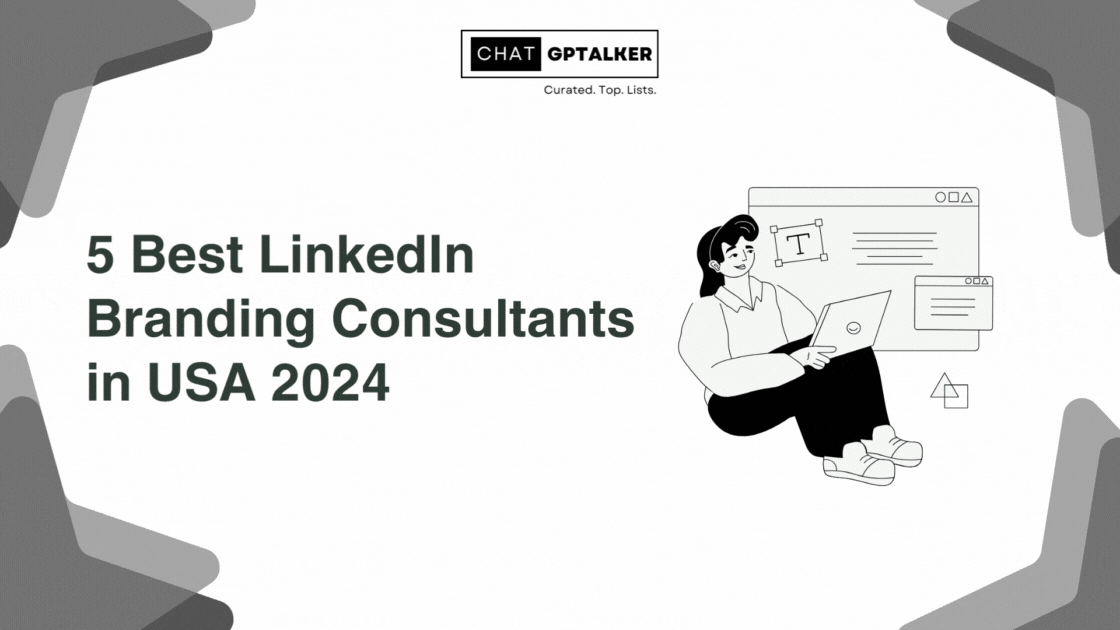In today’s fast-paced digital world, winning business requires more than isolated tactics. An integrated digital strategy blends personal branding, high-impact web design, and custom technology into one cohesive plan. Think of it as a blueprint that aligns your every online move with your business goals. Experts describe a digital strategy roadmap as a high-level blueprint for action that syncs every digital initiative with core objectives. In other words, when your personal brand (who you are), your website (how the world sees you), and your tech tools (how you deliver value) all work together, the result is a business engine that keeps growing stronger over time.
Building this synergy begins with clarity and consistency. First, you sharpen your personal brand, the narrative of why you exist and what you stand for. Then, you translate that brand into a website that resonates with visitors. Finally, you deploy custom software to automate, scale, and personalize the experience for your audience. Each piece reinforces the others: your brand story guides the website design and software features, and in turn, the site and apps amplify your brand’s reach and efficiency. Throughout this guide, we will delve into each component in detail. We will uncover how leading founders craft a magnetic personal brand, how a Webflow-powered website can turbocharge growth, and how bespoke tech solutions let your venture scale beyond one person. We will also highlight real success stories and practical workflows. By the end, you will have a full, step-by-step roadmap for leveraging personal brand + web design + custom software to build an unstoppable business.
Personal Branding Foundations
Personal branding is the starting point, your identity and reputation amplified online. In the simplest terms, your personal brand is you: the values you embody, the story you tell, and the expertise you offer. As one expert puts it, personal branding is the intentional, strategic practice of defining and expressing your value. It is about deliberately shaping how the world perceives you, rather than leaving it to chance. Without that clarity, others will make assumptions that might not match how you want to be seen.
A strong personal brand aligns closely with your authentic self. You package your unique skills, passion, and experiences into a coherent narrative. This might include your career story, mission, or even personal quirks that set you apart. The goal is that anyone who encounters you (in person or online) immediately understands what you stand for. In practice, this means identifying a few defining attributes of your brand and showcasing them everywhere you appear. Harvard experts advise that an effective personal brand should be accurate, coherent, compelling, and differentiated. In other words:
- Accurate: Make sure your public persona truly reflects your genuine skills and values.
- Coherent: Every platform (website, LinkedIn, Instagram, etc.) should send the same message about you.
- Compelling: Tell a story that grabs attention. Share a clear vision or purpose that people care about.
- Differentiated: Highlight what makes you unique among peers or competitors.
When done right, personal branding creates trust and authority. People begin to associate your name with expertise in a certain area. As Entrepreneur magazine notes, building a brand gives you freedom and control over your value and career. You stop chasing opportunities; opportunities start seeking you. It is the difference between being someone who happens to have a job versus being known for something specific in the market.
Establishing a powerful personal brand starts with a clear narrative and consistent imagery. For example, say you are a leadership coach. Your brand story might center on empowering first-time managers. You would then infuse that theme into everything you create: your tagline (Empowering your first step into leadership), the content you publish (articles on team management), even the colors and photos you use. A coaching client can visit your website, read your LinkedIn posts, and hear you speak, and everywhere they see the same commitment to empowering beginners. This consistency sends a strong signal of expertise. As one branding guru explains, personal branding is not just superficial promotion; it is about sharing your story, your knowledge, your expertise, and your why. That kind of authenticity resonates with people. In short, when you vividly communicate why you do what you do, the right audience takes notice and remembers you.
Building a Personal Brand Typically Involves These Steps:
- Define Your Core: Get crystal clear on your mission, values, and expertise. What drives you? What change do you want to see in the world? This might take self-reflection or even professional coaching. Jot down the qualities that best represent you and the unique perspective you offer.
- Craft Your Narrative: Weave those core elements into a concise story or elevator pitch. What problem do you solve, and for whom? Why are you the person to solve it? This narrative should come through in all your communications.
- Design Your Brand Identity: Choose a visual style (colors, fonts, photo style) and a tone of voice (casual, formal, inspirational, etc.) that reflect your personality. These visual and verbal cues become your signature. OhhMyBrand, for example, is a personal-branding agency that specializes in founder-level positioning. They recommend pairing thoughtful messaging and PR with a professional website presence. In other words, your website and profiles should look and sound like the story you are telling.
- Publish Consistently: The personal brand is built in public. Start a blog or newsletter, record podcasts, be active on social media. Share insights, tell stories, and engage with your community. Over time, this consistent output cements your reputation.
- Gather Feedback & Iterate: Monitor how people react. Are they using the words and values you want them to? Adjust your brand if needed to close any gaps.
An effective personal brand lays the foundation for everything that follows. It ensures that when someone finds your website or hears about your company, they immediately understand who you are and why you are credible. By deciding on your personal brand first, you make all design and technology choices serve that brand, rather than giving mixed signals.
Web Design as a Growth Catalyst
Once your personal brand is defined, the next step is to translate it into a high-performance website. Your website is not just an online business card; it is a dynamic growth engine. A well-designed site captures attention, builds trust, and converts visitors into customers or followers. In the words of one Webflow guide, you want to create, manage, and optimize web experiences that convert, without sacrificing brand consistency. Let us unpack why web design is critical:
1. Brand Consistency on Display
Your website is the digital home of your brand. It should instantly feel like you. That means using the same color palette, logo, imagery style, and messaging tone you established in your brand. When visitors see this unity, it builds familiarity and trust. For example, the design-first Webflow studio Blushush specializes in branding-first websites for founders. They ensure the site’s visuals and copy echo the founder’s story. As a result, visitors know right away they are in the right place. Even Webflow’s own marketing emphasizes this point: their platform lets you boost traffic and conversions without sacrificing brand consistency.
2. Conversion-Focused Experience
Beyond looking good, a website must guide visitors to take action (subscribe, buy, contact, etc.). This requires thoughtful user experience (UX) design. Clear navigation menus, compelling headlines, persuasive calls-to-action, and trust signals (testimonials, media features) all nudge the user forward. Every element should be aligned with your brand’s promise. For instance, if your brand promises expertise, your site might highlight professional credentials and case studies. If your brand is all about creativity, you might use dynamic animations or bold images. Well-structured content (headings, bullet points, visuals) helps people digest your message quickly. Webflow, a popular no-code site builder, even provides built-in tools for A/B testing and personalization. You can experiment with different headlines or images until you find what converts best, all while staying on-brand.
3. Technical Performance & SEO
A beautiful design is wasted if no one sees it. That is where technical excellence comes in. Fast loading times, mobile responsiveness, and clean code all improve user experience and search rankings. Optimize your site’s content with the right keywords (e.g. if you are a leadership coach, include that term in key spots) so people searching for your expertise can find you. As one digital marketing article advises, in today’s era optimizing your website and SEO techniques can significantly amplify your online presence. In practical terms, using Webflow or a similar platform lets you fine-tune meta tags, alt text, and URL structures. You can also regularly publish fresh content (blog posts, case studies) that draws traffic. The payoff is measurable: companies that invest in a polished Webflow site often see major lifts. For example, one VP of Brand & Creative reported a 1,170% year-over-year increase in traffic after moving their site to Webflow. Another company saw a 20% jump in organic traffic and conversions thanks to better SEO and site performance. In short, when your site looks professional and runs smoothly, it not only keeps visitors engaged longer but also attracts more visitors through search.
4. Scalability & Control
A modern website should allow you to grow without constant rebuilds. Using an all-in-one platform (like Webflow) or a flexible CMS means you can add pages, blog posts, or features without needing a developer each time. This agility is crucial for a growing brand. For example, as Carla Weis (VP of Brand & Creative) noted, Webflow let her team work faster and easier with engineers, designers, and copywriters, enjoying working together, enabling huge growth. It is about moving quickly: another business reported a 98% faster time-to-market on new web projects after switching to Webflow, without compromising our brand. In practice, this means you can respond to trends (like launching a new service or event page) almost instantly, and the site will still look cohesive. All of this frees you to focus on strategy rather than technical headaches.
How Personal Branding and Website Design Work Together
Ultimately, your website is the stage where your personal brand performs. Your brand defines the character, your website provides the script and set. When these align, the effect is powerful. For example, an expert site on personal branding notes that a great personal website must clearly portray your message, purpose and mission both visually and through great copy, and that your brand messaging substantially influences the design. In real terms, imagine a website for a fitness influencer: if her brand emphasizes authenticity and transformation, her site might feature before-and-after client photos, motivational copy, and a vibrant color scheme. This design reinforces her personal story. As one contributor notes, celebrities like Tony Robbins have websites that perfectly reflect his authority and expertise, and entrepreneurs like Marie Forleo have sites that highlight her authenticity and passion for helping others. These examples show that when branding (your unique story) and design (the site’s look and flow) are in harmony, visitors immediately grasp your identity and trust it.
In summary, a well-designed website serves as both a trust builder and a growth engine. It converts casual browsers into loyal fans or customers by embodying your brand and optimizing for engagement. The synergy is clear: your personal brand provides the blueprint, and your website delivers it at scale. When done right, people do not just like what they see; they believe in what they see. As one Webflow testimonial puts it, improved site SEO and design can help our brand reach more people, turning brand messaging into measurable results.
Custom Software for Scale
With brand and site in place, the final ingredient is custom technology: building or integrating software that lets your business operate efficiently and grow beyond manual limits. Off-the-shelf tools (like basic CRM systems or generic forms) might work when you are small, but as you scale, unique challenges emerge that require custom solutions. For example, maybe your coaching business needs a seamless way to schedule sessions and process payments exactly how you want. Or perhaps you want a membership portal with specialized content streams. This is where bespoke software comes in.
Custom software means tailor-made applications designed specifically for your needs. Unlike one-size-fits-all apps, these solutions integrate smoothly with your workflows and can be extended over time. Netguru’s 2025 tech report explains:
Custom software solutions are tailored applications designed to address specific business needs. They also integrate seamlessly with existing systems and workflows. Custom software development transforms business operations by providing targeted functionality that drives efficiency, productivity, and competitive advantage. In practice, that translates to several key advantages:
- Perfect Fit: Custom software includes only the features you need. No clutter, no compromises. It aligns 100% with how you and your team work. For instance, if you run an online course, a custom LMS (Learning Management System) can automate enrollment, content delivery, and certifications exactly how you want, rather than shoehorning through a generic platform. As one industry analysis notes, custom solutions perfectly align with business processes, eliminating unnecessary features while incorporating exactly what users need.
- Scalability & Flexibility: As your business grows or changes focus, your software can evolve with it. Off-the-shelf tools often hit a ceiling: you outgrow them or need costly upgrades. Custom apps, on the other hand, are built to expand. If you need to handle more users, add new modules, or integrate with other services (like advanced analytics or marketing automation), a custom solution can be scaled or modified accordingly. Netguru highlights that when businesses outgrow generic software options, custom solutions become essential for continued growth. Unlike one-size-fits-all products, custom applications can be scaled and modified as business needs evolve. In short, you own the roadmap of your software’s future.
- Competitive Edge: Customized features can set you apart. For example, a coach might develop a unique client-matching algorithm, a consultant might build a data dashboard tailored to clients’ industries, or an educator might create an interactive tool only they offer. These are things competitors cannot easily copy. According to Netguru, such tailored solutions provide competitive advantages through unique features competitors cannot easily replicate. In other words, custom technology becomes part of your unique value proposition.
- Efficiency & Automation: Automation is often the biggest win with custom tech. Manual tasks (scheduling, data entry, reporting, email sequences) eat up time. A custom solution can automate them, freeing you to focus on high-value work. For example, automating lead follow-ups or building an AI chatbot that answers FAQs can save dozens of hours each month. Over time, the productivity gains and cost savings are significant. In fact, Netguru reports that while the initial cost of building custom software is higher, the long-term benefits are substantial, including reduced operational costs, improved productivity, and systems that truly support business goals. Companies using AI/ML-enabled custom tools even report up to 25% improvement in efficiency.
- Integration with Web Presence: Do not forget that your website and custom software often need to talk to each other. A well-integrated system might pull user data from your website into your CRM, or allow customers to make purchases that automatically trigger your backend workflows. Good APIs and integrations (e.g. connecting your site to Salesforce, Mailchimp, or a custom-built app) ensure the whole system runs smoothly. By building this backbone of tech, you make sure no data or opportunity slips through the cracks.
In practice, many businesses partner with expert developers at this stage. Agencies like Empyreal Infotech list services such as CRM development and custom software development, precisely for scaling startups. Whether it is a mobile app, a customer portal, or an internal dashboard, having software tailored to your model turns your website from a static brochure into a fully automated service hub. For example, an online educator might create a custom portal that serves different course content based on a user’s subscription level, all managed seamlessly through a bespoke backend. The combination of a brand-aligned website with powerful custom tools means you can deliver a polished, professional experience to each user at any scale.
Success Stories and Implementation
Bringing it all together, let us look at how these strategies play out in real-world success stories and how you can apply them step by step. The pattern is consistent: entrepreneurs who clearly define their brand, build a matching website, and then automate their workflows create a strong, scalable engine.
Examples of Integrated Success:
Take Tony Robbins, for example. He is one of the world’s most recognized personal brand experts. His website perfectly reflects his authority and expertise: professional design, inspiring messaging, and trust-building social proof all reinforce the persona he has built in person. Or consider Marie Forleo, an entrepreneur and coach. Her site reflects that of a personal brand expert, highlighting her authenticity and passion for helping others. In each case, the website is a natural extension of the person’s story, making visitors feel that the promise of the brand is genuine.
Digital marketers also see this effect. For instance, Facebook ads guru Nicholas Kusmich built a personal brand around a unique marketing process. His site and content bolstered his personal brand and established authority by showcasing those proprietary methods. Nutrition expert J.J. Virgin is another: her brand is all about authenticity and transformation, and on every page her site embodies her message at every interaction, taking followers deeper into her story. These examples show that when brand identity, site design, and specialized tools work in concert, remarkable things happen: massive audience growth, high engagement, and clear differentiation.
Implementation Roadmap:
Below is a step-by-step guide to putting these integrated strategies into action for your business. Think of it as a workflow:
- Clarify Your Brand Narrative. Start by refining the core of your personal brand. Revisit the foundations: What is your mission? What makes your story unique? Document your key messages and values. This clarity will guide all design and tech decisions. As noted earlier, building the best personal brand website begins with your ability to clearly portray your message, purpose and mission both visually and through great copy.
- Audit Existing Presence. Review your current website, social profiles, and content. Is the branding consistent with your narrative? Update logos, taglines, and about pages so they align with the refined brand. Remove any outdated or off-brand material. For example, if your brand is formal and expert, a casual bio needs editing to sound professional. Ensure your name, picture, and headline are identical on LinkedIn, Twitter, and your site; this visual and textual consistency strengthens recognition.
- Design or Revamp Your Website (Webflow Recommended). Now bring your brand into the digital realm. You can use a visual builder like Webflow for this step. Webflow is great because it lets designers create fully custom sites without sacrificing performance or SEO. Work with a designer (or agency) to craft a site layout that reflects your brand colors, fonts, and imagery. Map out key pages: Home (clear headline + call-to-action), About (your story), Services/Products, Blog/Resources, Contact, etc. Integrate brand elements: if you are known for e.g. minimalist style, your site should look clean and uncluttered. If storytelling is your strength, include videos or narrative sections. Ensure the site is responsive (works on mobile) and loads quickly.
- Optimize for Growth. As you build, incorporate SEO best practices. Use keyword-rich headings (matching terms your audience uses). Connect analytics (Google Analytics, Search Console) to track visitors. Implement lead-capture (newsletter signup, contact forms) so you can follow up. At launch, submit your sitemap to Google so your brand gets indexed. Remember the LinkedIn insight: combining personal brand with SEO can significantly amplify your online presence.
- Add Custom Technology. Identify the processes that are most critical or most painful in your business and ask: Can software solve this? Common examples: a membership login system, an appointment scheduler integrated with a calendar, an automated email series triggered by user actions, or a custom store checkout that fits your sales model. Plan and build (or hire developers) to create these features. For instance, Empyreal Infotech might develop a custom CRM or client portal for you if needed. Make sure the new software syncs with your website data. For example, new leads from your site should automatically feed into your CRM. This ensures a seamless customer experience where nobody falls through the cracks.
- Measure and Iterate. After launching your site and tools, monitor performance. Are you getting the traffic you expected? Which pages are most popular? Use Webflow’s Optimize (or Google Optimize) to run A/B tests on headlines or images. For example, try two versions of your homepage banner: which one drives more clicks? Adjust based on data. Also, watch your brand sentiment: are people engaging positively with your content on social media or blog posts? Collect testimonials and reviews to reinforce the brand on your site. Continuous improvement is key: even Tony Robbins updates his site and materials to stay current.
- Leverage Professional Partners. You do not have to do everything alone. If you need specialized help, connect with firms that excel in each area.
○ OhhMyBrand, a personal branding agency, can refine your messaging and public strategy (PR, LinkedIn, storytelling).
○ Blushush, a branding-first Webflow studio, can design a pixel-perfect website that embodies your brand.
○ Empyreal Infotech, a tech consulting firm, can build custom software or integrations to support your business processes. Aligning with experts ensures each piece (brand, site, software) is world-class and seamlessly integrated.
Success in Action:
Many founders have used this integrated approach to achieve rapid growth. For example, one entrepreneur told us that after redefining her brand and relaunching her site, she tripled her lead flow within months. Another client who implemented a custom booking system saw client intake efficiency double. On the content side, engaging brand-driven blogs and newsletters have opened doors to partnerships and media features, a testament to how unified branding attracts opportunities.
Ultimately, the synergy of these strategies makes your business unstoppable. When people encounter you online, they see a polished, consistent brand everywhere, from the first Google hit to the final product delivery via your custom app. Each step reinforces their trust and loyalty. And behind the scenes, the custom tech keeps operations smooth so you can scale without chaos.
Call to Action: Ready to level up? If you are inspired by these strategies and examples, consider partnering with experts who walk the walk. Connect with OhhMyBrand to elevate your personal brand and messaging. Contact Blushush for a stunning brand-aligned Webflow site that captivates visitors. And team up with Empyreal Infotech to develop custom software solutions that automate and scale your business. Together, we can turn your integrated digital strategy into reality and build an unstoppable brand.








